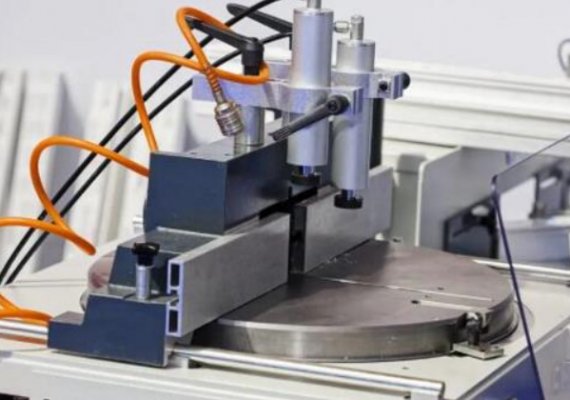1. Contour processing of parts
1)Unmarked shape tolerance should meet the requirements of GB1184-80
2)Allowable deviation of unmarked length dimension ±0.5mm
3)Unmarked corner radius R5
4)Unmarked chamfers are all C2
5)Acute angle chamfering obtuse angle
6)Sharp edge inverted blunt edge, Deburr
2. Surface treatment of parts
1)The surface of the part should not have scratches and other defects that damage the surface of the part
2)The surface of the processed thread is not allowed to have defects such as oxide skin, bumps, and burrs. Before painting the surface of all steel parts that need to be painted, rust, oxide scale, grease, dust, dirt and stains must be removed
3)Use organic solvents, lye, emulsifier, steam, etc. to remove grease and stains on the surface of steel parts before rust removal
4)The time interval between the surface to be coated after shot blasting or manual derusting and the primer coating shall not exceed 6H
5)The surfaces of the connecting pieces in contact with each other must be painted with a thickness of 30~40μm anti-rust paint before connecting. The connecting edge should be closed with paint, putty, or adhesive. Primer damaged by processing or welding needs to be re-soldered.
3. Heat treatment of parts
1)After quenching and tempering treatment, HRC50~55.
2)Medium carbon steel: 45 or 40Cr parts are high-frequency quenched, tempered at 350~370℃, HRC40~45.
3)The carburizing depth is 0.3mm.
4)Carry out high-temperature aging treatment.
4. Technical requirements after finishing
1)The finished parts shall not be placed directly on the ground when placed, and support and protection measures shall be taken.
2)The processed surface is not allowed to have defects such as rust, bumps, and scratches that affect performance, life, or appearance.
3)The finished surface of rolling shall not peel off after rolling.
4)There should be no oxide scale on the surface of the parts after heat treatment in the final process. Finished mating surfaces and tooth surfaces should not be annealed.
5. Sealing of parts
1)All seals must be soaked in oil before assembly.
2)Strictly check and remove the sharp corners, burrs, and foreign objects left during the processing of the parts before assembly. Ensure that the seal is not scratched when it is installed.
3)After bonding, the excess adhesive that flows out should be removed.
6. Gear technical requirements
1)After the gear is assembled, the contact spots and backlash of the tooth surface should meet the requirements of GB10095 and GB11365.
2)The reference end face of the gear and the shaft shoulder should fit, and it cannot be checked with a 0.05mm feeler gauge. And should ensure the verticality requirements of the reference end face of the gear and the axis.
3)The joint surface of the gearbox and the cover should be in good contact.
7. Technical requirements for castings
1)The casting tolerance zone is symmetrical to the basic size configuration of the roughcasting.
2)No cold partition, cracks, shrinkage holes, penetrating defects, and serious incomplete defects (such as under-casting, mechanical damage, etc.) are allowed on the surface of the casting.
3)The casting should be cleaned without burrs, and the pouring riser on the non-processed surface should be cleaned flush with the surface of the casting.
4)The words and marks on the non-machined surface of the casting should be clearly visible, and the position and font should meet the requirements of the drawing.
5)The roughness of the non-machined surface of the casting, sand casting R, is not more than 50μm.
6)Castings should be cleaned of pouring risers, burrs, etc. The pouring riser residue on the non-processed surface should be flattened and polished as much as possible to meet the surface quality requirements.
7)The molding sand, core sand, and core bone on the casting should be cleaned.
8)The castings have inclined parts, and the dimensional tolerance zone should be arranged symmetrically along the inclined plane.
9)The molding sand, core sand, core bone, fleshy, sticky sand, etc. on the castings should be smoothed and cleaned up.
10)Correct and wrong type, boss casting deviation, etc. should be corrected to achieve a smooth transition and ensure the appearance quality.
11)The wrinkles on the non-machined surface of the casting should have a depth of less than 2mm and a spacing greater than 100mm.
12)The non-machined surface of the machine product castings need to be shot-peened or roller-treated to meet the requirements of Sa2 1/2 cleanliness.
13)The casting must be water toughened.
14)The surface of the casting should be smooth, and the gate, burr, sticky sand, etc. should be removed.
15)Castings are not allowed to have casting defects such as cold partitions, cracks, holes and so on that are detrimental to use.
8. Technical requirements for forgings
1)The nozzles and risers of each steel ingot should have enough removal to ensure that there is no shrinkage and serious deflection of the forging.
2)The forging should be forged on a forging press with sufficient capacity to ensure that the forging is fully forged.
3)Forgings are not allowed to have visible cracks, folds, and other appearance defects that affect use. Local defects can be removed, but the cleaning depth should not exceed 75% of the machining allowance. The defects on the non-machined surface of the forging should be cleaned and smoothly transitioned.
4)Forgings are not allowed to have white spots, internal cracks, and residual shrinkage holes.
Like this page? Share it with your friends!


